
Your baby is sitting up on her own. She’s eyeing your meal and even grabbing for the food on your plate. At about 6 months (or perhaps even younger), it’s time to read our guide to introducing baby food.
Start with stage 1 baby foods—simple, pureed foods like single-grain cereals, fruits and veggies. They are generally very thin (even runny) and made from less allergenic foods.
If your baby is ready for stage 1 foods, these ideas will help get you started. Now, bust out that blender or baby food maker and have fun!
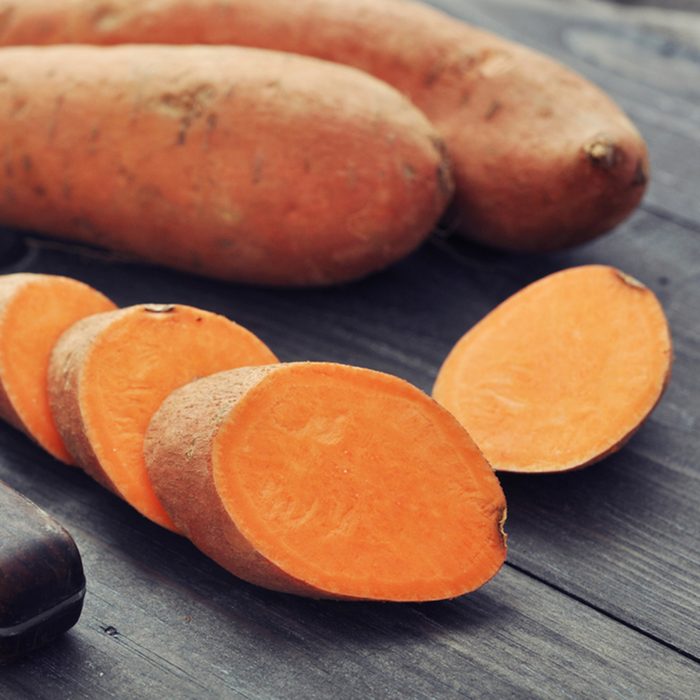
Sweet Potato
These orange beauties are great sources of vitamins A and C, beta carotene and more. Peel and cut sweet potatoes into small pieces, then place in a steamer basket. Boil water and check potatoes periodically. Remove when tender.
You can also poke holes in the skin of a potato and microwave. Once cooked (and cooled!), place the potatoes in a blender or food processor and add water, breast milk or formula. Continue to add liquid until you reach a smooth, thin consistency.
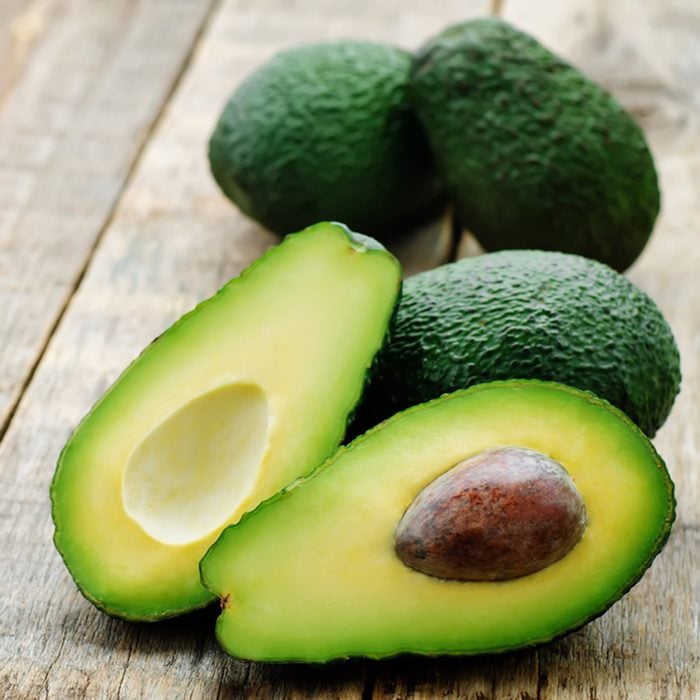
Avocado
This lovely fruit is great for baby food because it’s naturally very soft. Rich in fiber, healthy fats and vitamin A, avocados are great for humans of all ages. To prep for baby, cut into the avocado, remove the pit and scoop out the flesh of the fruit. Smash with a fork and serve.
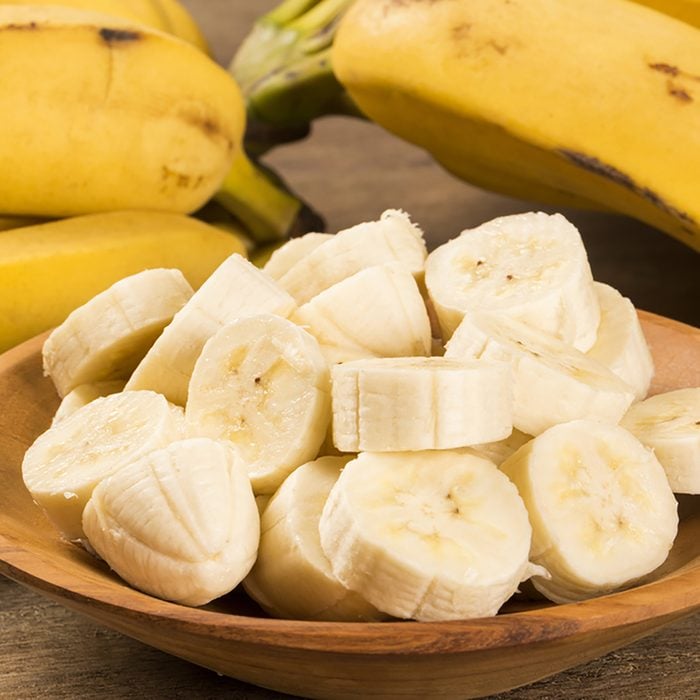
Banana
Known for their potassium, bananas are a great baby food because they’re portable and easy to mash on the go. Choose a ripe banana (which will smash more easily), cut it into chunks and mash—adding water, breast milk or formula if needed.
Adults should eat bananas, too. Here’s why.
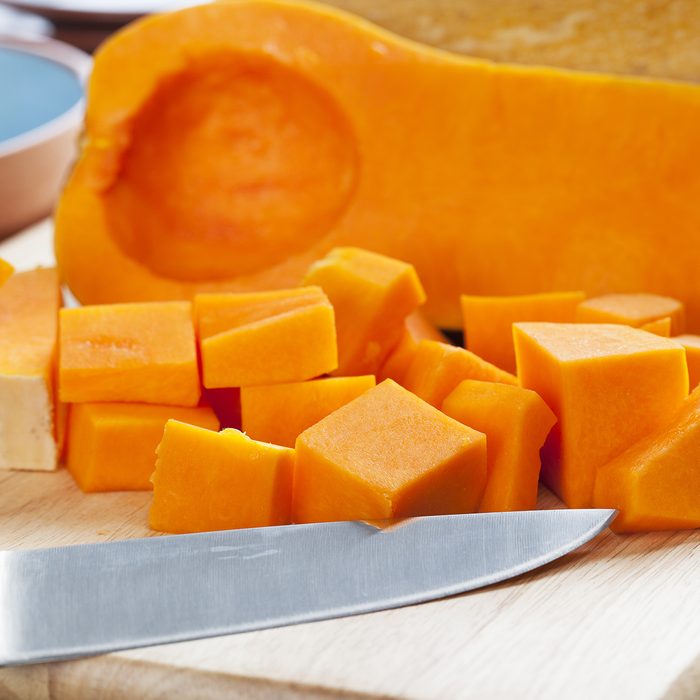
Butternut Squash
The natural sweetness of butternut squash makes it a great first food. Plus, the veggie is rich in fiber and potassium. To prep, cut the squash in half, scoop out the seeds and bake (flesh down) for about 40 minutes at 400 degrees. Then, scoop out the meat of the squash, adding water (or breast milk or formula) until you reach the desired consistency. Want to introduce baby to a new flavor? Add a little cinnamon.
Get step-by-step instructions for making your own baby food.
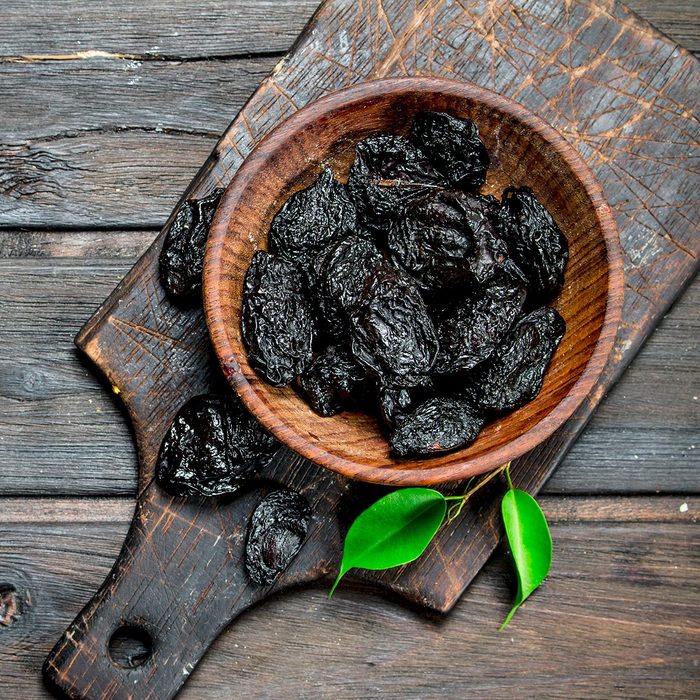
Prunes
Prunes might be a tough sell for some people, but they are especially great when your baby has digestive issues. They’re high in fiber, potassium and vitamins K and A. Soak dried prunes until they’re plump; then toss into a blender—adding water or breast milk/formula until you reach the desired consistency.
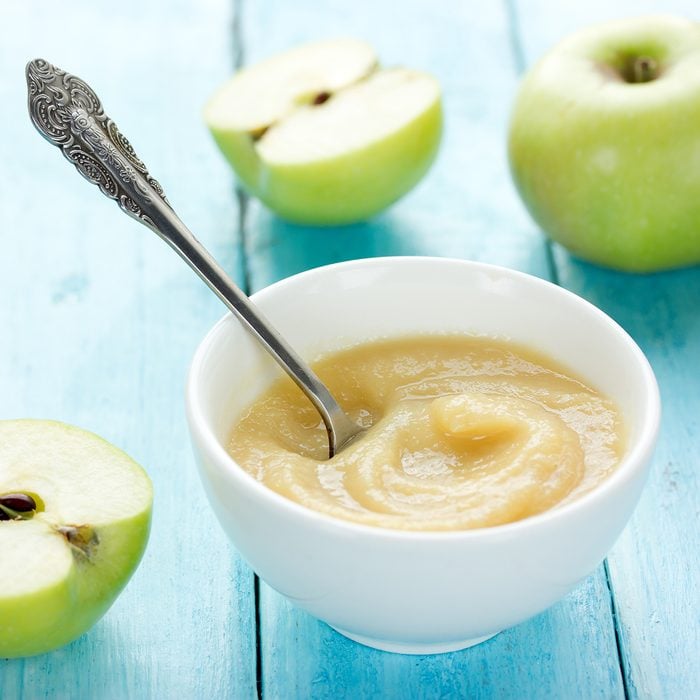
Apples
Applesauce isn’t just a baby food. It’s a healthy snack your kiddo will enjoy for years, so master this one early. You can mix and match your apples (Galas and Braeburns are a good place to start). Remove the core and peel the apples. Then cut into chunks, cover with water and boil until tender. Blend, adding water or breast milk/formula until you reach a thin consistency. Consider adding a little cinnamon for a special treat.
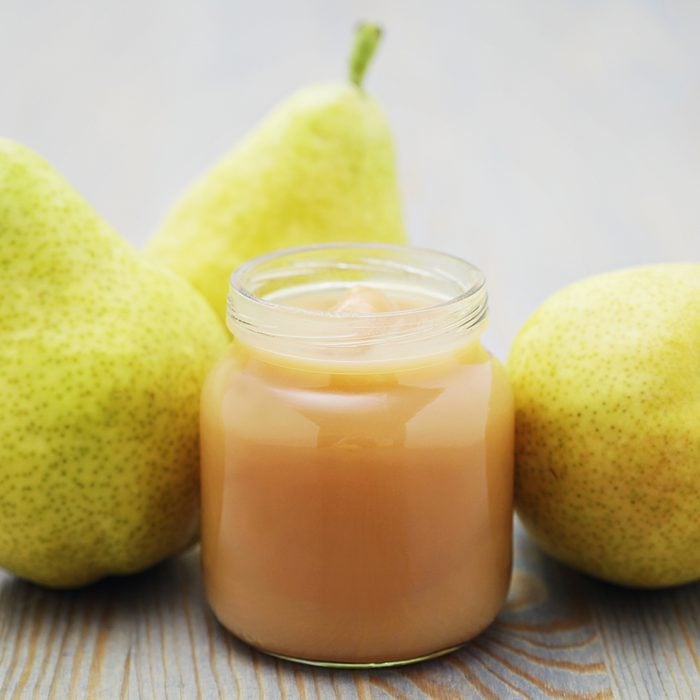
Pears
Like apples, pears are a simple food to prepare for baby. Core, peel and cut into chunks, cover with water and boil until tender. Toss them in a blender or food processor. If you need to, add water or breast milk/formula to thin out the puree.
Need a new blender? Here’s what to know before you buy.
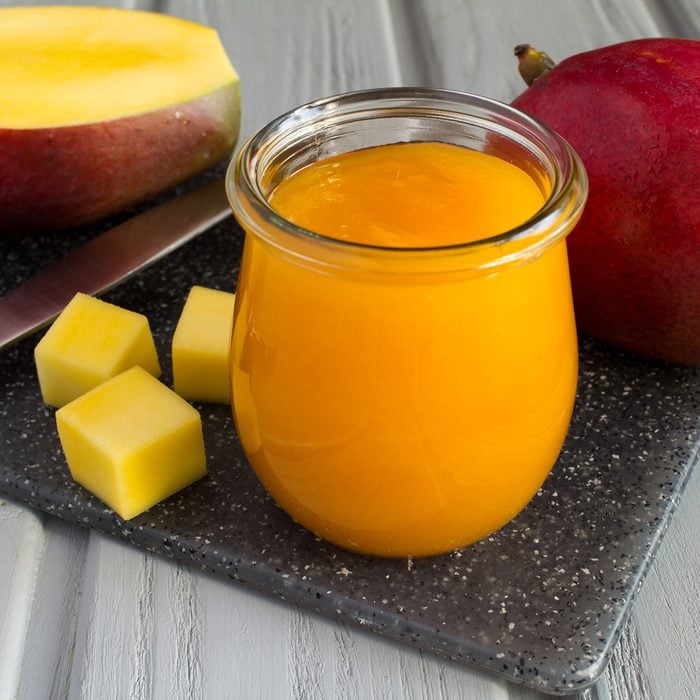
Mango
These lovely tropical fruits are great for an early food—plus, they’re a vitamin C powerhouse! Peel, remove the pit (here’s how), cut into chunks and throw mango into the blender, adding breast milk/formula until you reach the desired consistency.
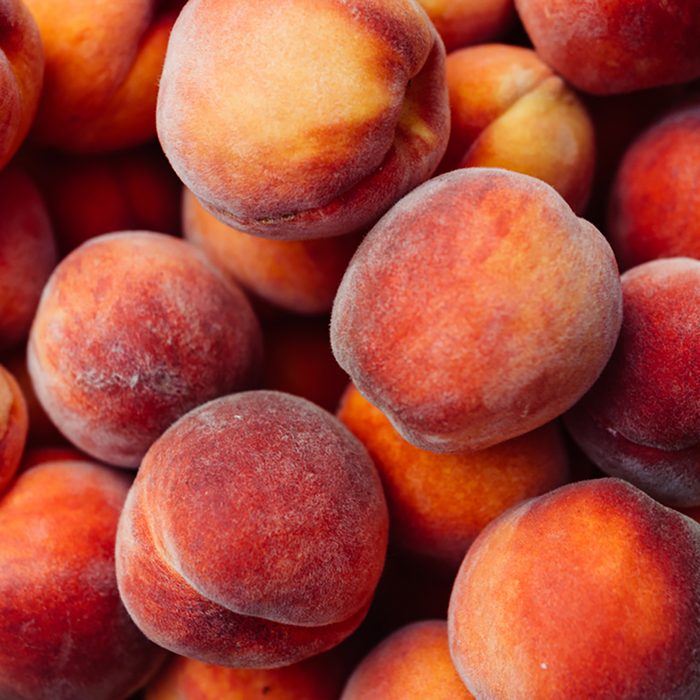
Peaches
A great source of fiber and vitamin C, peaches are a healthy, early food. Remove the peels and pits of these fuzzy fruits. Then, steam in water. Pull the fruit out and place in a blender. Add a little liquid if necessary.
Once baby is a little older, she’ll love these sweet peach desserts!
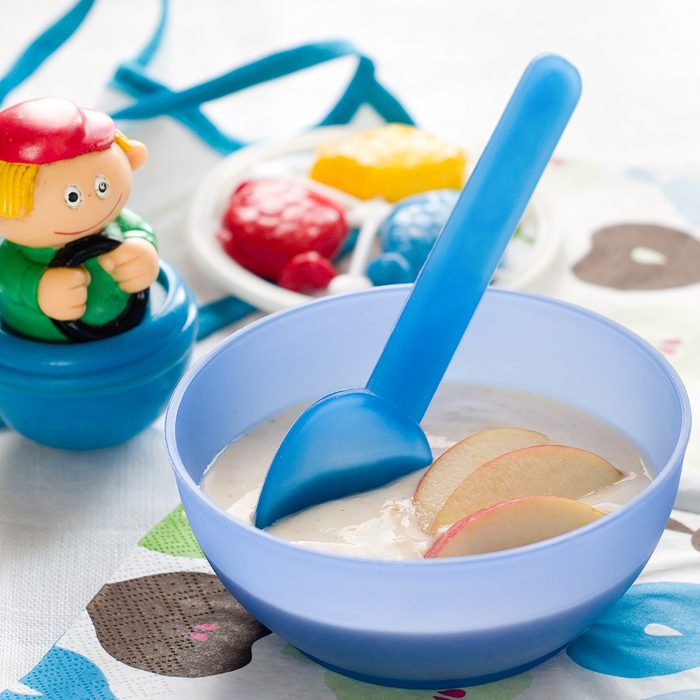
Rice Cereal
A common first food, packaged rice cereal is easy to mix with breast milk or formula. And fortified cereals offer baby great nutritional benefits, too.
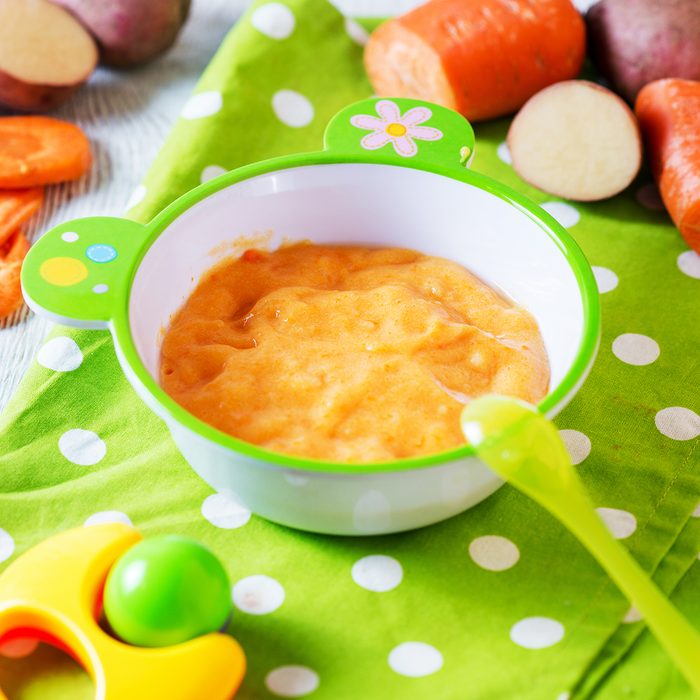
Carrots
With a natural sweetness, beta carotene-rich carrots are a good early veggie for babies. Peel and cut ’em into thick slices; then steam or boil until they’re soft. Next, throw the cooked carrots in a food processor, and add liquid until the texture is runny enough for your baby.
Note: Every product is independently selected by our editors. If you buy something through our links, we may earn an affiliate commission.
